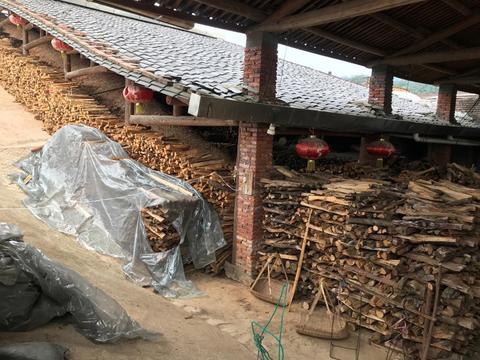Jian Zhan pottery was most revered during the Song Dynasty. Some say it was the pinnacle of black porcelain ware and was especially appreciated and studied at the time. Not everyone could afford this brilliant teaware, and it was generally reserved for the elite and certain tea masters.
We already got deep into why this type of tea ceremony ware is so desired in our last article. This time, let's dive into how it's made and how to choose the right Jianzhan teacup.
If we were to now compare the beauty of Jian teacups to that of other pottery made at the time, we might not immediately think that Jian ware is the most beautiful.
While Tian Mu bowls do have beautiful oxidation that creates their unique patterns, they are all uniformly dark in tone and bulky in weight. The Song Dynasty saw the production of elegant, thin porcelain adorned with beautiful artwork. So why were Tian Mu bowls in particular so desired?
There are, in fact, many reasons for this.

Why Jian Zhan?
For one, it is crucial to consider the cultural implications of the Song Dynasty. As well as the practices of tea masters at the time. During the Song Dynasty, tea masters were often monks from Zen temples. Tea was not only grown on the temple grounds but was also often processed there, and the art of serving tea was perfected in Buddhist temples. Thus, the tea ceremony of the Song Dynasty tea ceremony as a whole had an air of Zen practice.
Zen appreciates quite plain objects that are not particularly eye-catching at first sight. It is at a closer look and a better examination that we can see what makes the item irreparable and unique. Looking at a Tian Mu tea bowl from afar, you might not be immediately drawn by its dark and heavy exterior. It is upon closer examination that we can notice the hare fur and oil drop patterns that draw us in, as if into the universe itself.
Not to mention that the muted jade color of the tea froth looked incredibly appealing against a darker background!
Another reason for the popularity of Jian Ware is the amount of effort required to produce the tea bowls.

Dragon Kilns
A dragon kiln, or climbing kiln, is a particular type of wood-fired kiln used for firing Jian Zhan pottery. Unlike regular horizontal kilns, it is built vertically. A dragon kiln can be up to 500 feet long and is usually built "climbing" up a mountain or hill. Temperatures in a dragon kiln reach up to 1400°C (compared to the ~1200°C of a standard kiln). Such high temperatures are crucial for the minerals of Jian Ware to melt, forming its iconic patterns.
The largest Dragon Kiln can fire close to 100,000 tea bowls!
Jian ware artists are known for smashing subpar cups. At a kiln site, you will find thousands of smashed cups that seem perfectly functional. However, it is part of the art of Tian Mu bowls to smash those that aren't perfect, to preserve the reputation of the industry and the artist's reputation. If the cups are kept and aren't smashed, there's a chance that at some point in time, they will be sold with the artist's signature on it, representing slightly failed pieces, which would tarnish the potter's name.

How To Choose Jian Zhan Tea Cups?
There are a few things one can watch out for that will determine the value of teacups and their price. Some of the important points are:
- silver and bluish tones of the glaze
- wood-fired pottery
- patterns with multi-dimensionality
- single pattern (only oil spots or hare's fur, etc.)
- the pattern shouldn't overlap
- the drip of the glaze should be perfect and not broken off at the bottom
- the glaze should be smooth without bumps or cracks
Best Tea For A Jian Zhan Tea Cup
So, which tea is the best? In fact, there is no particular tea that should be enjoyed out of a Jian teacup. The type of tea hardly matters, as long as it's a good-quality loose leaf tea. Many claim that green tea is exceptionally enjoyable in Jian ware. Not only can you clearly see the beautiful patterns of the glaze thanks to the lightly colored brew, but also because the minerals of the glaze may also slightly enhance the tea's flavor by making the water softer and accenting the tea's natural sweetness. We invite you to experience it for yourself!